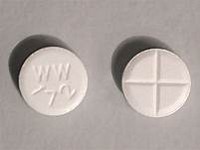Captopril
CLINICAL USE
Angiotensin-converting enzyme inhibitor:
DOSE IN NORMAL RENAL FUNCTION
6.25–50 mg 2–3 times daily
PHARMACOKINETICS
DOSE IN RENAL IMPAIRMENT
GFR (mL/MIN)
DOSE IN PATIENTS UNDERGOING RENAL REPLACEMENT THERAPIES
IMPORTANT DRUG INTERACTIONS
Potentially hazardous interactions with other drugs
ADMINISTRATION
Reconstition
–
Route
Oral
Rate of Administration
–
Comments
Tablets may be dispersed in water
OTHER INFORMATION
A
